Before Karan Gokani visited the teardrop-shaped island of Sri Lanka, he expected the food to be reminiscent of South India. Instead, he discovered a melange of flavors influenced by Tamils, Sinhalese, Dutch burghers, Malay Muslims, and years of colonization.
Gokani says black pork curry is the marquee dish for introducing Sri Lankan food to new audiences, and says he spent three years trying to reverse engineer the dish after tasting it. The curry is served at Hoppers, a trio of restaurants he co-owns in London.
"It's a curry like I never had before, so it's very much still rooted in that region of the world,” says Gokani. “For me that was a revelation, and even today defines my first experience of Sri Lanka."
Hoppers, which accompany many curries, are a traditional bread made with short-grain rice that's soaked with coconut then ground and fermented with yeast. Gokani describes how the batter is fermented like a sourdough and then swirled around an aluminum wok over a gas burner, creating a bowlike pancake to accompany curries and sambals.
Kothu, a popular street food, starts with chopped roti, which is stir fried with shredded vegetables, curry, eggs, and herbs.
"Imagine you live in Sri Lanka. You've been on this big night out. You come back, you then open your fridge and you look for your leftovers. The sum of the parts is incredible," says Gokani. He encourages those walking down Sri Lanka's streets to listen for the chop-chop sounds of vendors' clanky paddles making kothu on flat griddle tops.
Where chutneys and pickles figure prominently in Indian cuisine, sambols and mallungs — a cross between a salad and a relish — are the Sri Landan analog. Gokani shares his recipe for seeni sambol, an onion jam used as a condiment.
Gokani's book of recipes, which is also found at his restaurants, is "Hoppers: The Cookbook."
Plain, Egg & Milk Hopper
Makes 10-15 Hoppers
Ingredients
- 600g (1lb 5oz) uncooked short-grain white rice
- 60g (2¼ oz) boiled and chilled short-grain white rice (see page 24) [in the book]
- 115ml (3¾ fl oz) coconut milk
- 75g (2½ oz) fresh coconut, grated
- 1 tsp fast-acting dried yeast
- 2 tsp sugar
- 1 tsp sea salt
Instructions
- Wash the rice in cold water 5–6 times, or until the water runs somewhat clear. Cover with cold water and leave to soak for at least 8 hours, or overnight.
- Drain the rice and place it in a blender with the boiled rice, coconut milk, grated coconut and approximately 455–500ml (16–17fl oz) warm water. Blend until the mixture is the consistency of thick cake batter. In a separate bowl, combine the yeast and sugar with 2 tbsp tepid water. Once dissolved, add to the hopper batter and mix well. Cover and leave to ferment for 6–7 hours in a warm place until the batter becomes frothy and has a slightly sweet aroma.
- When ready to cook, preheat a hopper pan with the lid on over a medium heat without oil. Add the salt to the batter and mix well, then whisk in enough water to dilute the mixture to a thick custard consistency.
- Once the pan is hot, pour a ladleful of the hopper batter down the side, then gently swirl the pan once to coat all of the edges. Allow any excess batter to pool in the base of the pan. Place the lid on the pan and cook for 2–3 minutes until the edges are slightly brown and beginning to come away from the pan. Carefully remove the hopper from the pan with a palette knife and slide it onto a plate.
- Serve hot with a curry and Pol Sambol (page 161) [in the book].
Excerpted with permission from "Hoppers" by Karan Gokani published by Quadrille Publishing.
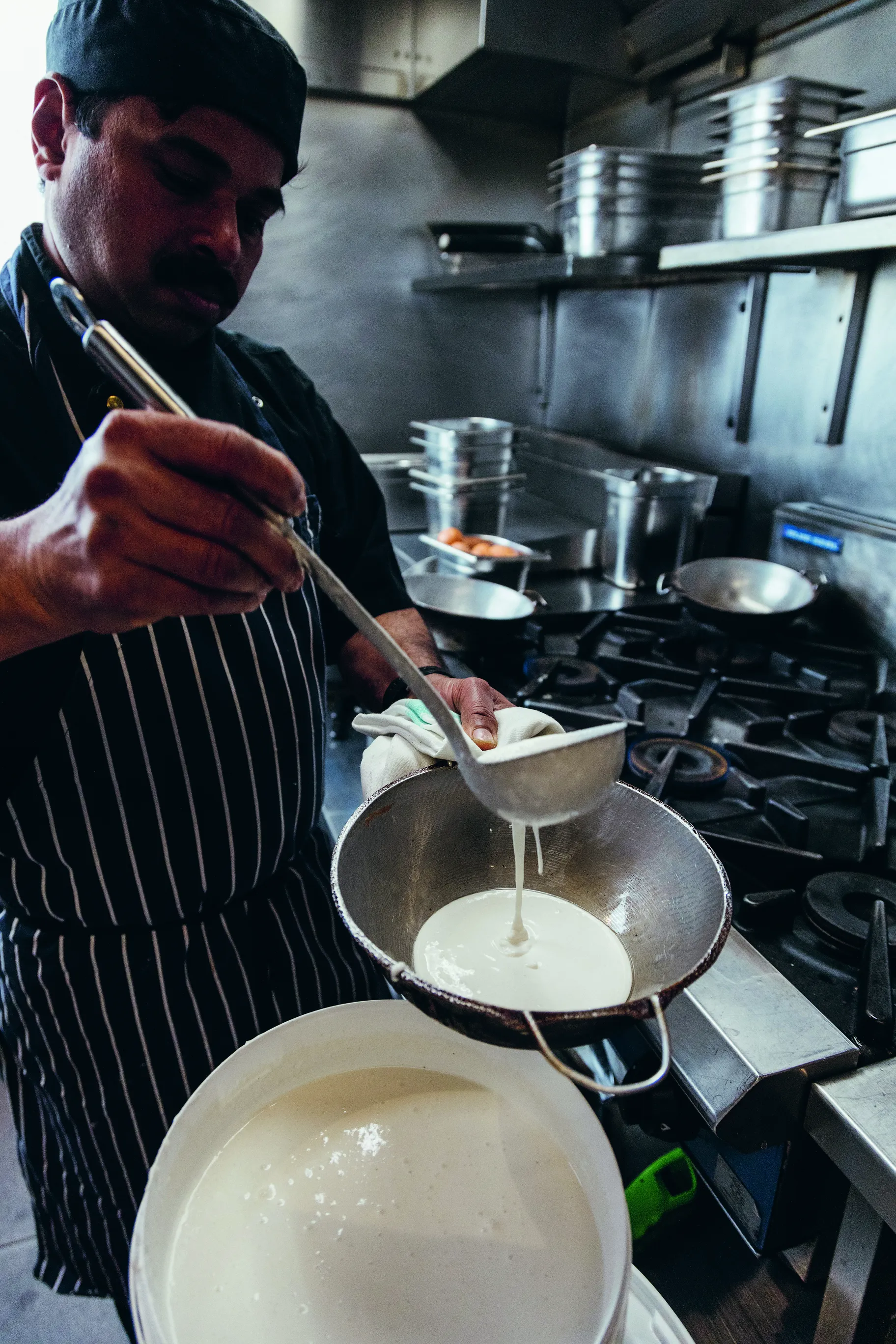
Many traditional breads in Sri Lanka were made with rice or lentils. Hopper batter is ready once it starts to bubble and has the right level of sweetness. Photo by Ryan Wijayaratne.
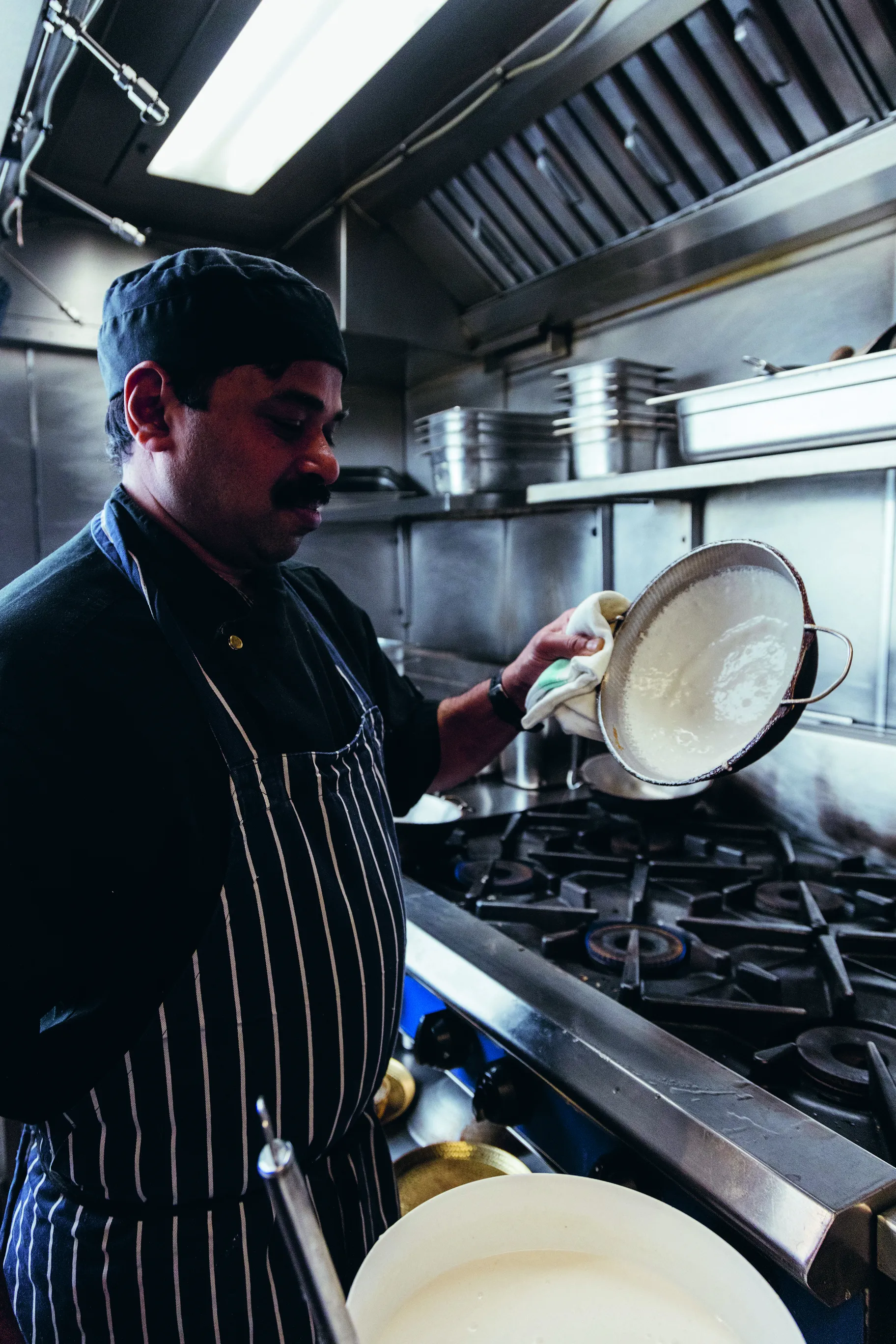
"You could use nonstick, but we always prefer the aluminum wok heated over gas," says Karan Gokani, describing the process of making hoppers. Photo by Ryan Wijayaratne.
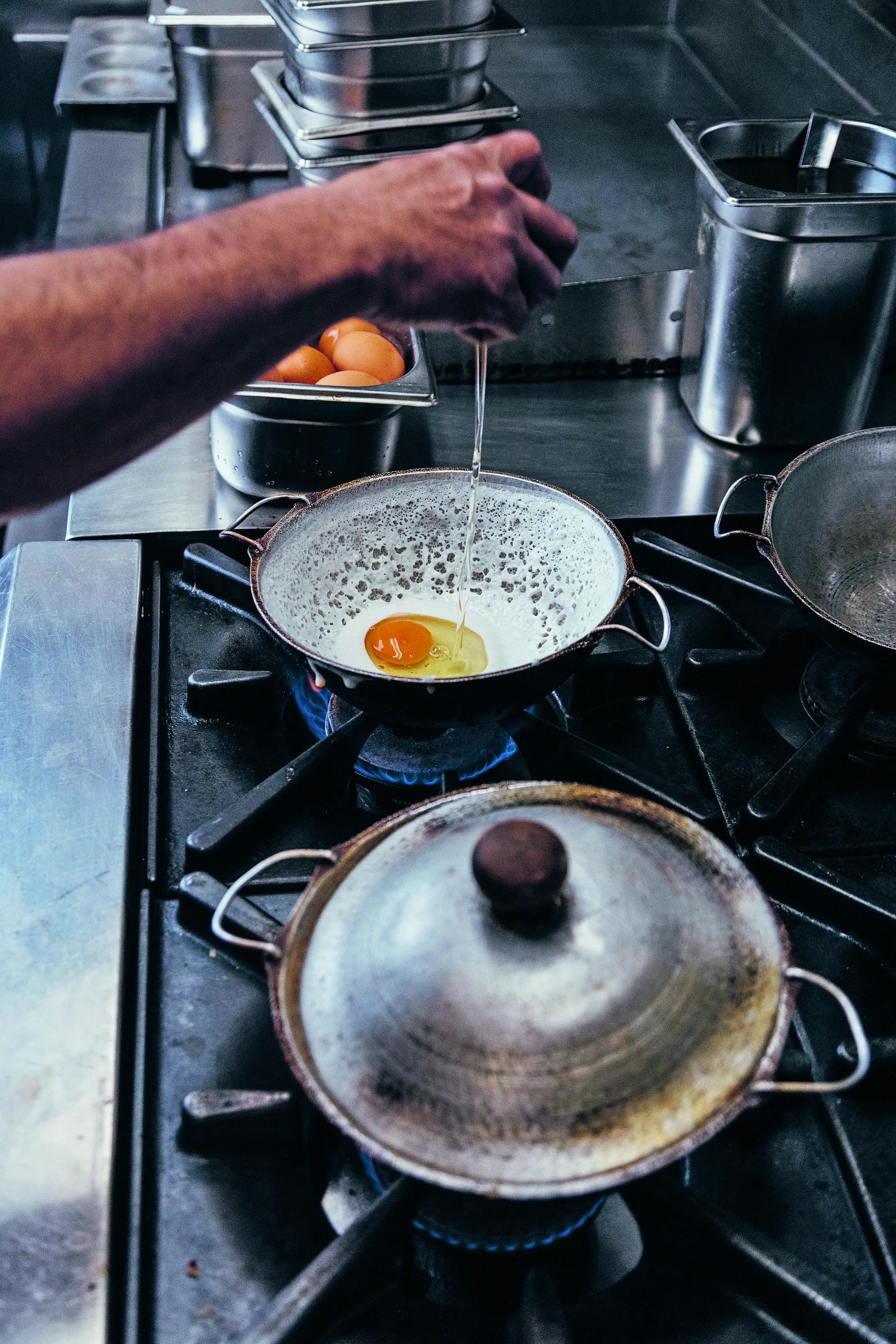
A pool of batter at the bottom of the wok with a quick swirl creates a thin lace around the top and a crisp, bowl-shaped pancake in which an egg can be cracked. Photo by Ryan Wijayaratne.
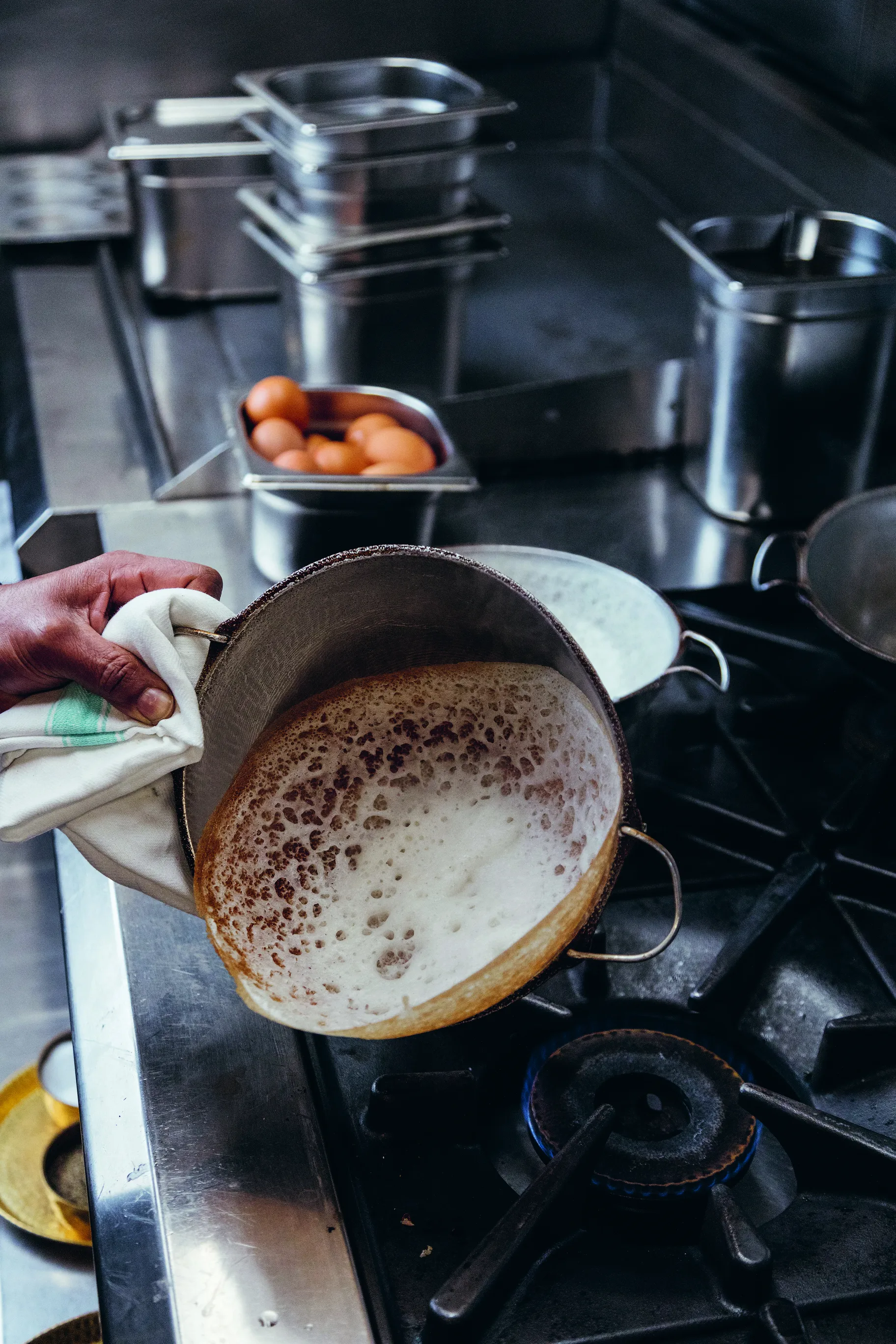
A hopper can be enjoyed on its own or ripped and dipped to eat with curries and sambals. Photo by Ryan Wijayaratne.
Seeni Sambol
Makes 240g (8 ½ oz)
Ingredients
- 2 tbsp rapeseed (canola) oil
- 6 green cardamom pods
- 2.5cm (1in) cinnamon stick
- 6 cloves
- 16 curry leaves
- 15cm (6in) piece pandan leaf
- 400g (14oz) red onion (approx. 2–3 medium onions), finely sliced
- 1 tsp salt
- 3 tsp Maldive fish flakes
- 1 tsp chilli flakes
- 3 tsp tamarind paste
- 3 tsp sugar
- juice of 1 lime
Instructions
- Heat the oil in a heavy-based pan over a medium-high heat. When hot, add the cardamom pods, cinnamon and cloves and fry for 1 minute until fragrant. Add the curry leaves and pandan leaf and cook for a further 30 seconds. Add the onions and salt and cook, stirring often, for 8–10 minutes until deep brown but not burnt.
- Crush the Maldive fish flakes in a pestle and mortar, then add to the pan along with the chilli flakes. Cook for 2 minutes, then add the tamarind paste and reduce the heat to low. Continue to cook for 2 minutes more, adding a splash of water if it begins to stick. Finally add the sugar and mix well. Taste and adjust the seasoning with a little extra salt or tamarind, if needed. Allow to cool slightly before serving at room temperature or slightly chilled.
Excerpted with permission from "Hoppers" by Karan Gokani published by Quadrille Publishing.
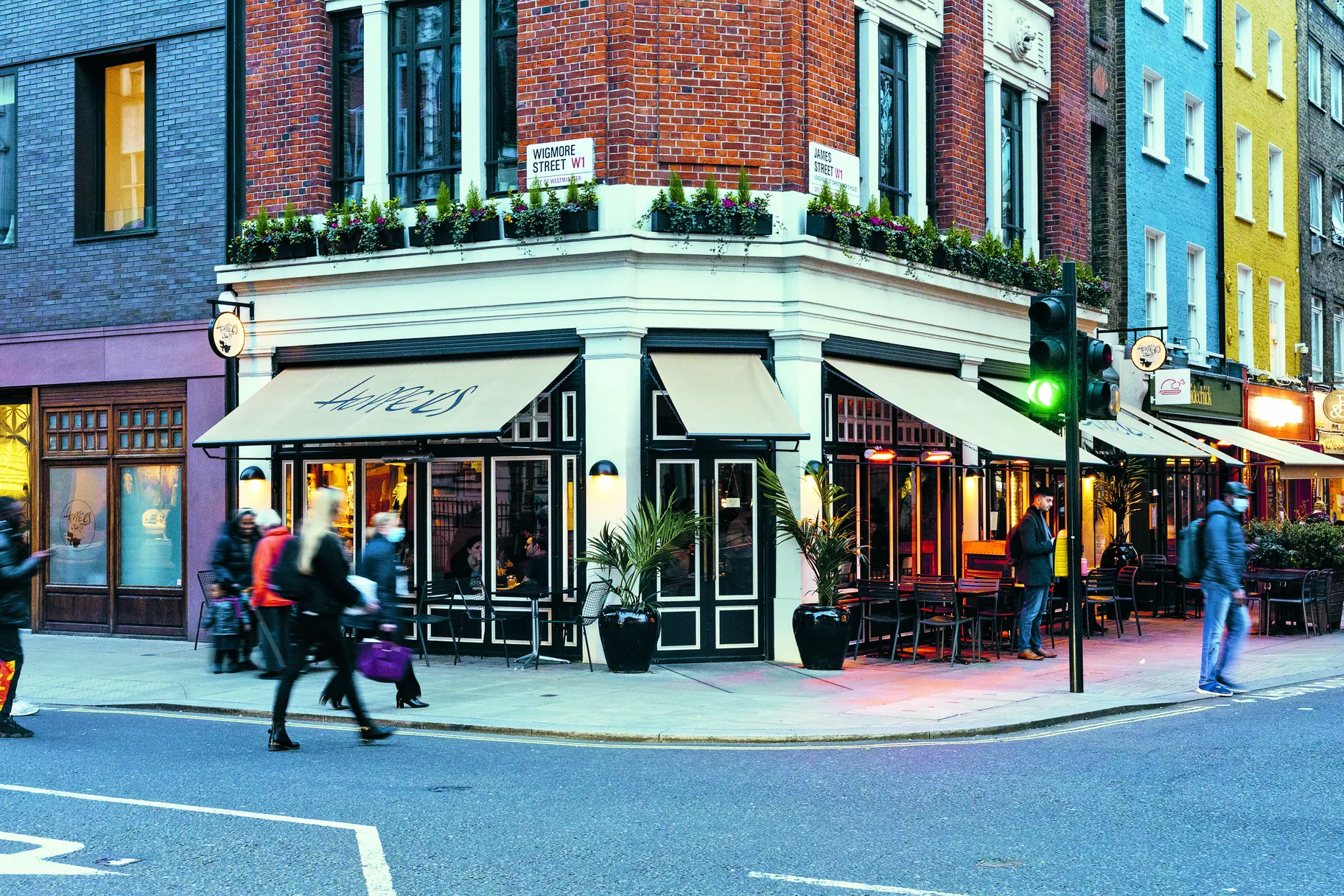
With three locations, Hoppers serves Sri Lankan and South Indian cuisine in London. Photo by Ryan Wijayaratne.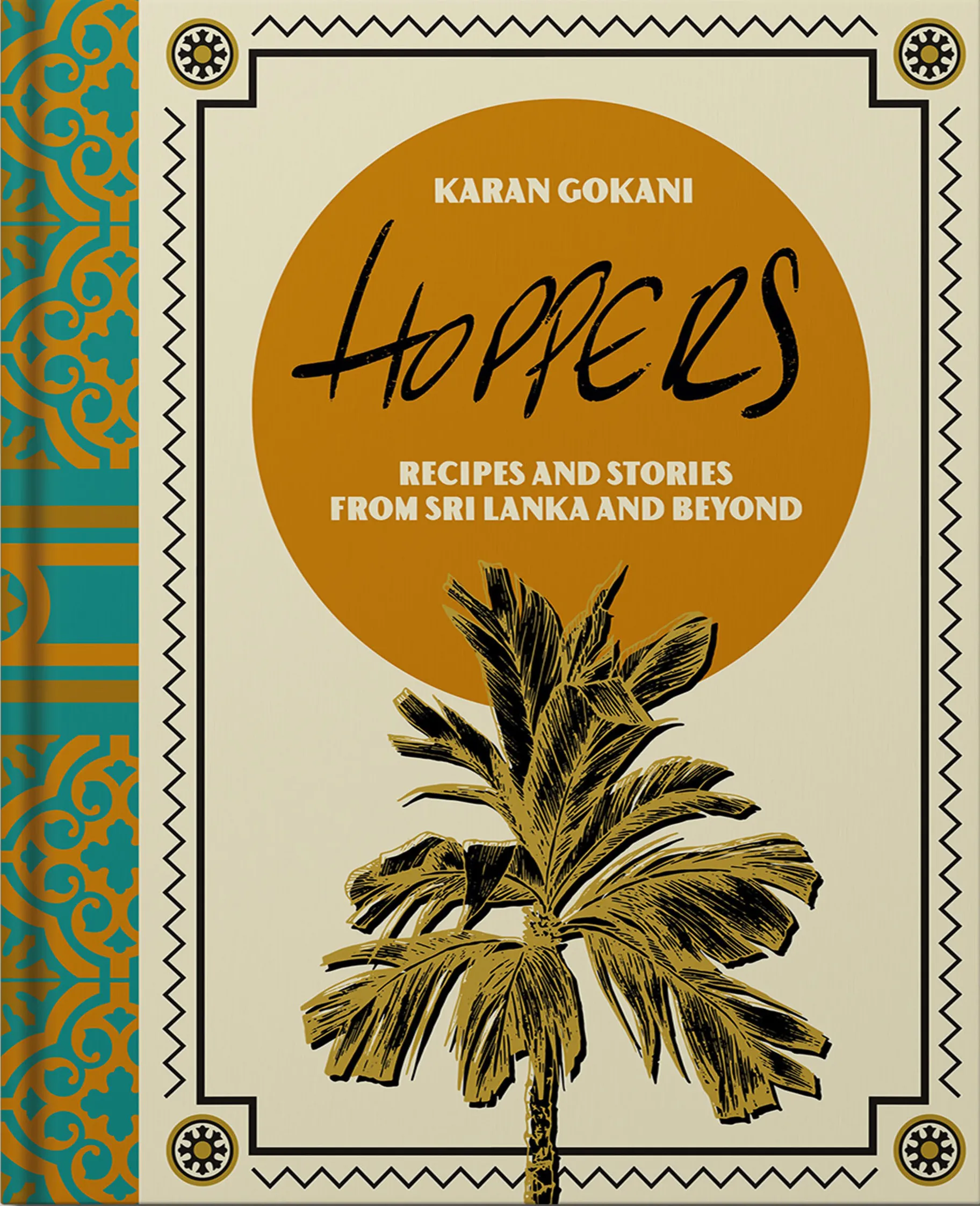
Karan Gokani lays out his first impressions of Sri Lankan food and the recipes behind his London restaurant in "Hoppers: The Cookbook." Photo courtesy of Quadrille Publishing.
